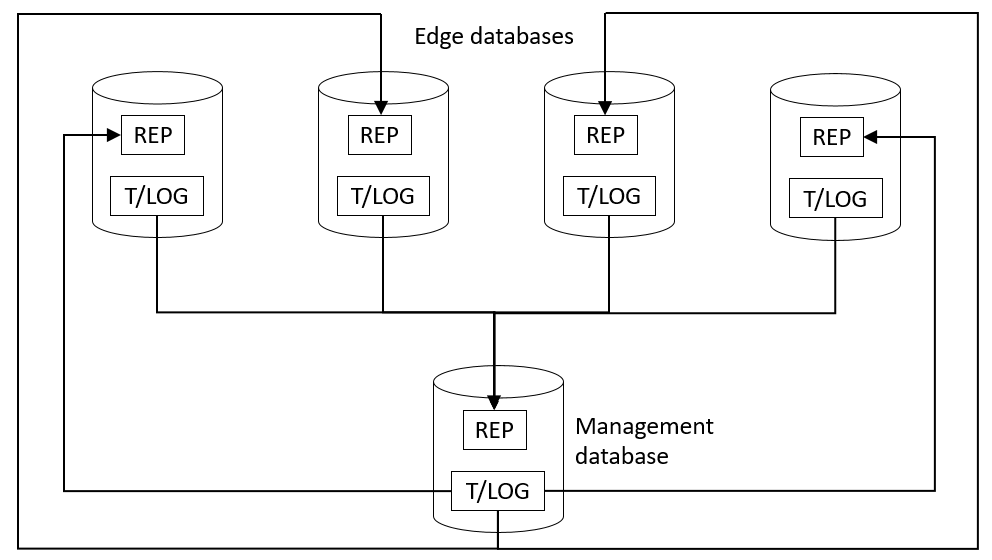|
Replicator configuration
|
Illustration
|
|---|---|
|
One source database, one target database.
Replicator instance on target database pulls update operations from transaction log (T/LOG) on source database.
|
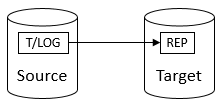 |
|
Multiple source databases, one target database.
Replicator instance on target database pulls update operations from transaction logs on source databases.
|
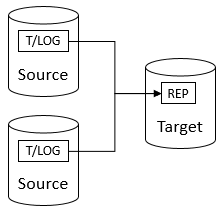 |
|
One source database, multiple target databases.
Each target database has a replicator instance that pulls update operations from the transaction log on the source database.
|
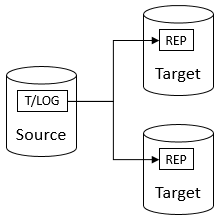 |
|
Databases are both source and target databases (bi-directional replication).
The replicator instance in each database pulls update operations from the transaction log on the other database.
|
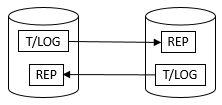 |
